From the November 2021 issue of Apollo. Preview and subscribe here.
One thing that seems particularly alien about the early days of abstract art is the faith in geometry. From the suprematists and constructivists of the Soviet avant-garde, to De Stijl, or the Purists in Paris, to the craft experiments of the Bauhaus, artists displayed an enthusiasm that was often moral in tone; a belief that instead of figuration and human proportions, the relationships of simple forms to each other would provide the basis for the new art of an industrial society. The idea now seems quite touching.
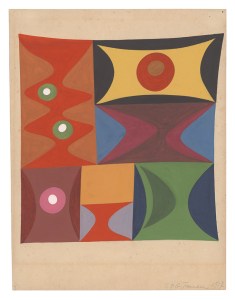
Elementary Forms in Vertical-Horizontal Composition (1917), Sophie Taeuber-Arp. Stiftung Arp e.V., Berlin
To come upon graphic works by Sophie Taeuber-Arp (1889–1943) with names such as Elementary Forms in Vertical-Horizontal Composition (1917), Geometric Construction (1942), or the delightfully Ritter-Sport-esque Vertical, Horizontal, Square, Rectangular (1917), is to encounter their semiotic confidence, their sense of systematic investigation, not to mention the sheer skill of composition.
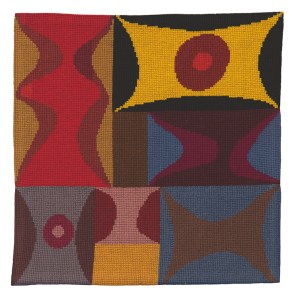
Elementary Forms: Vertical-Horizontal Compositiion (1917), Sophie Taeuber-Arp. Stiftung Arp, e.V., Berlin
Born in Switzerland in 1889, Taeuber-Arp was part of a generation that contained many of the greatest modernists, although her career was relatively short, ending in 1943 with her death from accidental carbon-monoxide poisoning. But throughout her life she innovated across a startling array of arts, industries, materials and media. The career-spanning show at Tate Modern (previously at the Kunstmuseum Basel and on its way to MoMA) contains graphic works, painting, textiles, accessories, costumes, scenography, dance, furniture, interiors, and buildings, essentially offering a near-complete sweep of the arts.
Taeuber-Arp was educated in schools of applied arts in Switzerland and Germany, with time spent in France and, like many modernists, Arts and Crafts principles of artistic unity shaped her conception. Moving back to Zurich after the First World War began, she conducted early experiments that ruthlessly test the possibilities of geometric form, colour and proportion, with works on paper that would sometimes become paintings, or just as likely textile works, such as the aforementioned Elementary Forms in Vertical-Horizontal Composition, which is shown in the exhibition both as its gouache study and as a woollen textile piece, consisting of a series of coloured rectangles, pulled out of equilibrium by tensely wobbling curves.
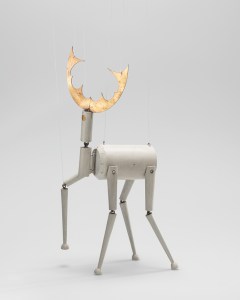
Stag (marionette for King Stag) (1918). Museum für Gestaltung, Zürcher Hochschule der Künste, Zurich.
During this early creative period Taeuber-Arp established herself as a teacher, as a member of the Schweizerischer Werkbund, and met Jean (Hans) Arp, whom she would marry in 1922. She too was involved with Dada at this time, showing a much more light-hearted side to her work than the constructivist experiments, with turned-wood ‘portraits’ of her friends and, as is customary from the period, a selection of bizarre party costumes left to us only as photographs. The marionettes and sets for King Stag (1918) are great fun, featuring characters with names such as ‘Freudanalyticus The Magician’, or ‘The Guards’, a multi-limbed character whose forms are reminiscent of an electricity substation.
In the 1920s she found commercial success for her designs and textiles and widened her repertoire. For the Aubette bar in Strasbourg, Taeuber-Arp provided a dazzling, if somewhat overwhelming set of interior designs, expanding her geometric transformations into three dimensions. These are easily as adventurous as the work of her collaborator on the project, Theo van Doesburg, again pointing to her position at the cutting edge of various fields, although her domestic furniture from this period is some way off the quality of the work coming out of the Bauhaus at Dessau. Later, in 1929, she designed a house and studio for herself and Arp in the Clamart suburb of Paris, a boxy concrete volume with irregular windows, but faced with a rough limestone that sets it apart from almost anything in modernism of the time – possibly predating Le Corbusier’s own notable return to masonry in the early 1930s.
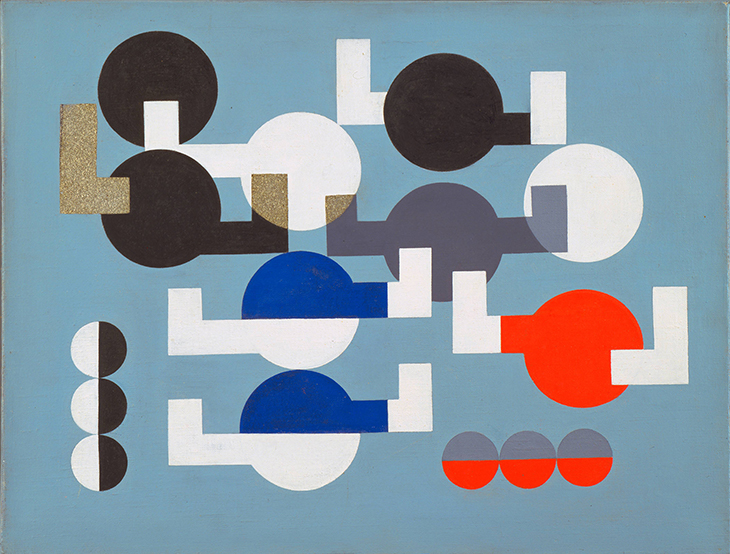
Composition of Circles and Overlapping Angles (1930), Sophie Taeuber-Arp. The Museum of Modern Art, New York Photo: The Museum of Modern Art, Department of Imaging and Visual Resources; © 2019 Artists Rights Society (ARS), New York/VG Bild-Kunst, Bonn
In the lead-up to the Second World War, her work continued to develop. She made further inroads into the potential of pure abstraction in painting, at times looking forward to Op art, post-war developments in relief painting and abstract sculpture. Indeed, in all the inventiveness you can find prefigurations of Matissse cut-outs and hints of Abstract Expressionism, before a return in her final works to a stark, almost Soviet graphic formalism. It is as though Taeuber-Arp briefly picked up directions and approaches that would sustain other careers for a lifetime, which is both a blessing and a limitation; there is rarely the sense of there being enough at stake, and one could wish for more development of the various themes.
Tate Modern’s exhibition takes its place among a number of shows about figures who for a variety of prejudices haven’t had the attention they deserve. The recent Charlotte Perriand show at the Design Museum has attempted to bring her out of the shadow of Le Corbusier, in whose atelier she had worked for years, and there’s a similarity in the breadth of work here, although Taeuber-Arp’s adaptability and precociousness is more remarkable. Similarly, the story of misogyny at the Bauhaus, despite its message of uniting arts and crafts and its overwhelmingly female student intake, has in recent years become part of the narrative about the institution. In Taeuber-Arp’s case she undoubtedly suffered a lack of attention as the wife of a more famous artist, but she was highly successful in her lifetime – as a textile designer, as a pedagogue – and later as a painter in her own right. The show suggests that this sheer versatility – with some of her specialisms being considered so feminine as to be incompatible with her painting and Dadaist work – led to her full achievements going uncelebrated for some time, and it goes a good way to giving a full picture of her restless geometric spirit.
‘Sophie Taeuber-Arp’ was at Tate Modern, London, from 15 July–17 October; ‘Sophie Taeuber-Arp: Living Abstraction’ is at MoMA, New York, until 12 March 2022.
From the November 2021 issue of Apollo. Preview and subscribe here.
Subscribe to get unlimited and exclusive access to the top art stories, interviews and exhibition reviews.Unlimited access from just $16 every 3 months

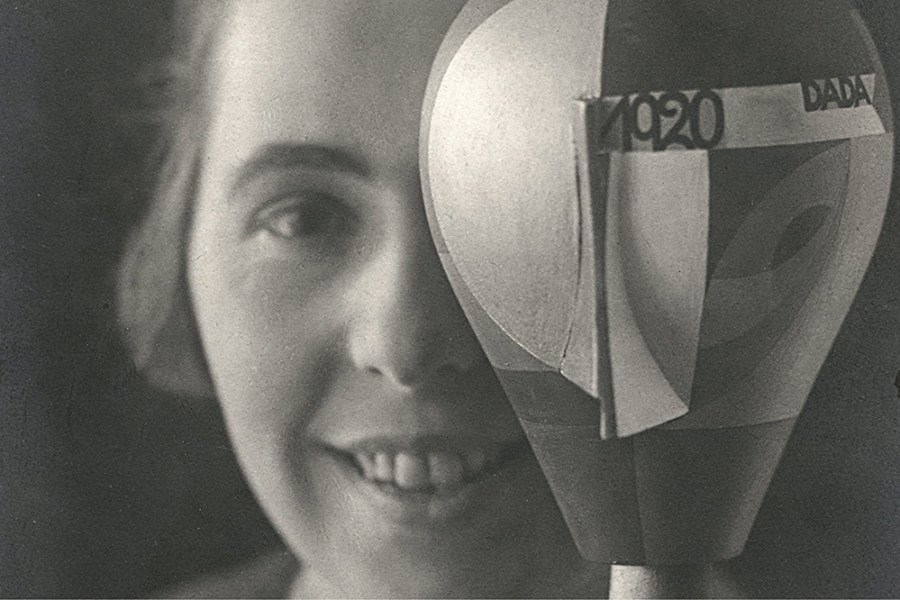
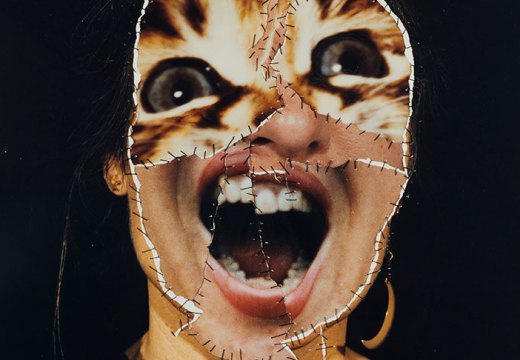
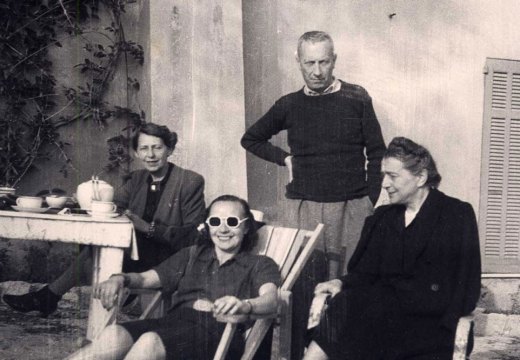
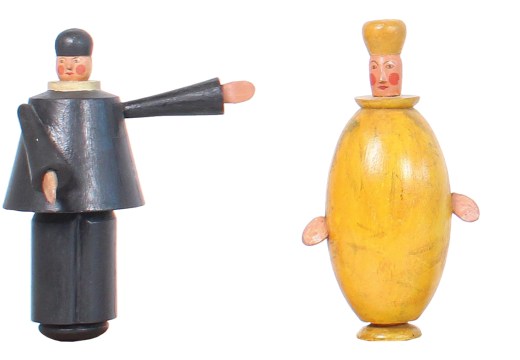









![Masterpiece [Re]discovery 2022. Photo: Ben Fisher Photography, courtesy of Masterpiece London](http://www.apollo-magazine.com/wp-content/uploads/2022/07/MPL2022_4263.jpg)
It’s time for the government of London to return to its rightful home